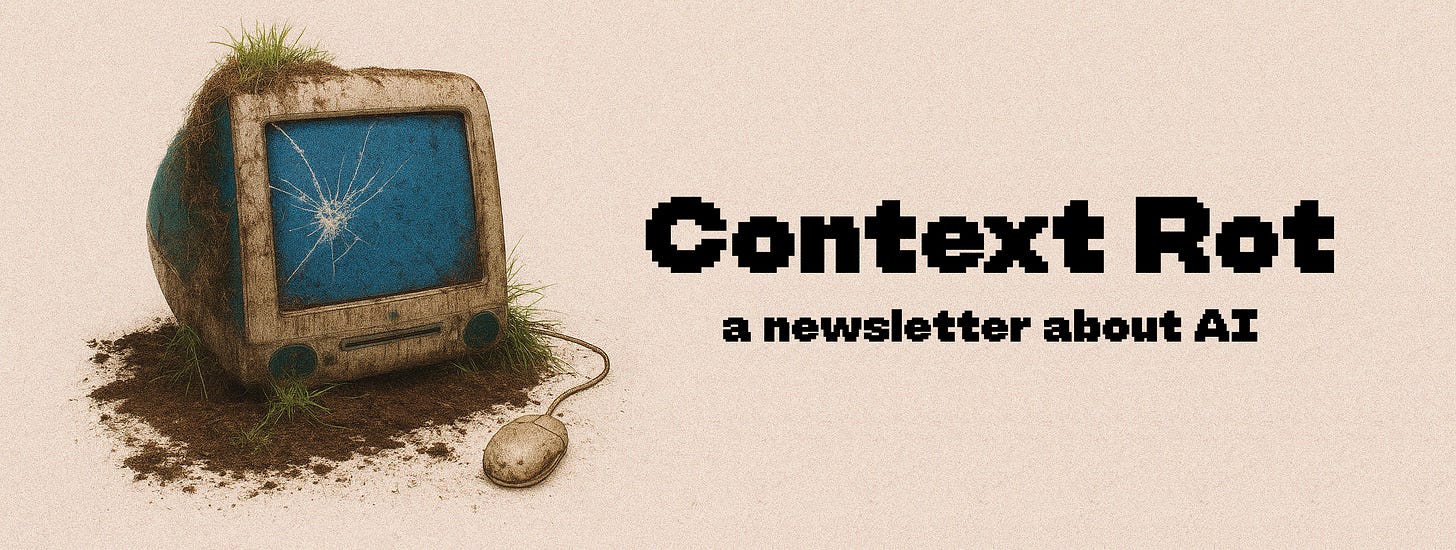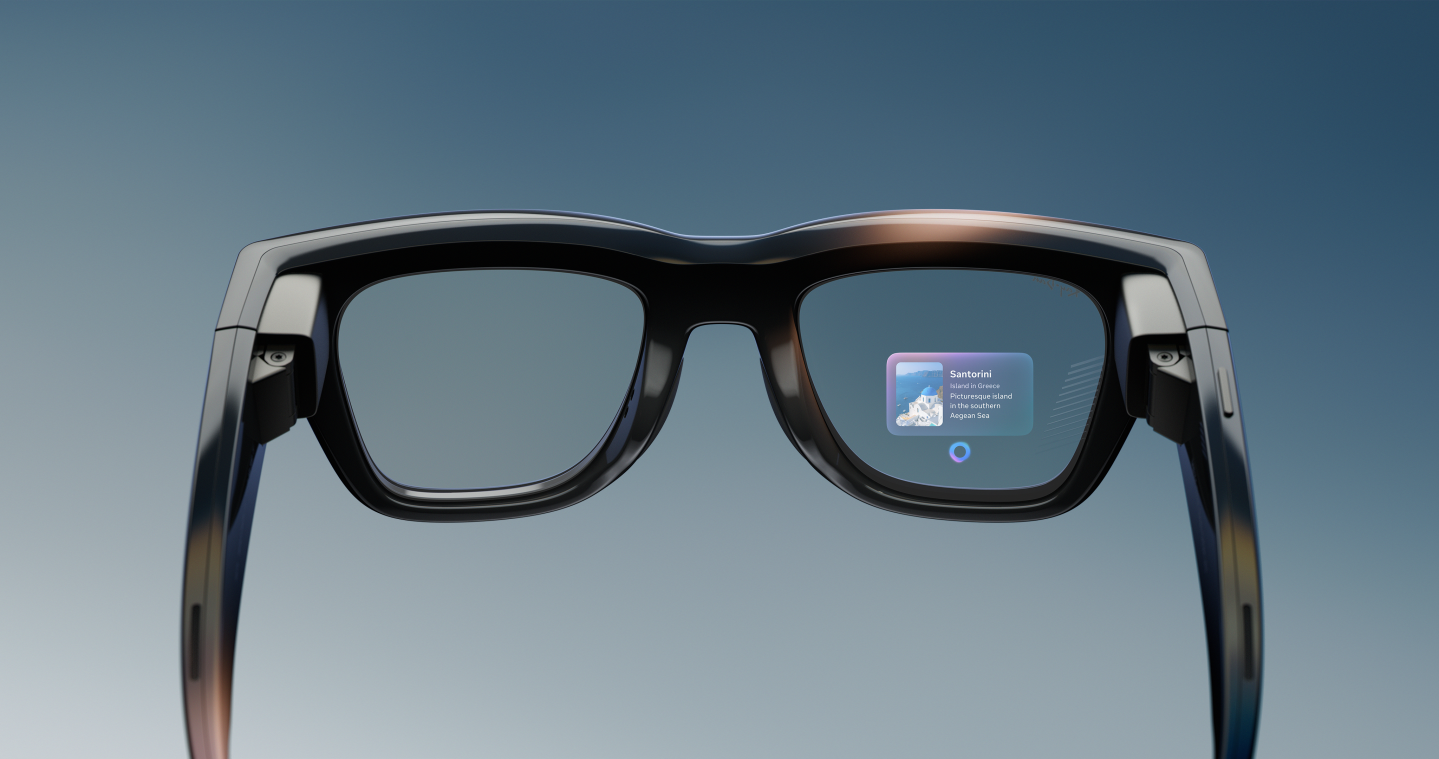Meta Put a Screen in Their Smart Glasses
My eyes are up here
In this issue: Zuck demos some impressive wearables and not-so-impressive AI, more than half of ChatGPT users are women, TikTok is definitely not going away in 2025, and some Gen Z employees need to be reminded to shower.
Missed Connections
Meta’s Connect conference kicked off last night, and the keynote featured a flurry of hardware device announcements and demos. The highlight was the new “Meta Ray-Ban Display” glasses, which are basically a slightly clunkier version of the company’s current Meta Ray-Bans with the addition of a semi-transparent digital screen that sits in front of your right eye, so you can watch videos, read messages, and see notifications without having to pull out your phone. The display is essentially invisible to everyone but the wearer, so if you suspect someone is watching a TikTok or checking their texts instead of listening to you, you’ll have to rely on subtle context clues like the fact that they’re staring blankly down and to the right and also completely ignoring everything you say.
If you’re not the most adept at reading body language, another giveaway might be that the person you’re talking at is swinging their arm around and gesturing at no one, because Meta also introduced their Neural Band, which is a wristband that detects signals from the wearer’s muscles and uses them to control the device. The Apple Vision Pro (remember those?) has a similar system for its gesture-based UI, but since the Neural Band uses “electromyography,” it doesn’t rely on being able to see your hand movements, so you can be more subtle, or at the very least not have to hold your arm out in front of you. This is kind of cool, but if you’re doing it out in public you’ll probably still look like a dork.
There was also a predictably large focus on how Meta’s latest AI assistants are integrated into the glasses, and here’s where things went off the rails. One employee attempted to give a demo of how the AI can help you cook by walking you step by step through a recipe as it watches what you’re doing through the cameras. The AI seemed to initially understand what it was seeing, but after the employee asked it how to get started, the AI went into a sort of doom loop and repeatedly (and proudly?) announced that the recipe was halfway done despite the guy’s increasingly desperate pleas to know what the first step was. The flustered employee blamed the wifi, which… probably was not the issue.
Zuck later tried to show off how to start and receive video calls with a combination of voice and gesture controls, and was left genuinely speechless as the whole process failed over and over. The general vibe was sort of like a bootleg version of a recent Apple event: impressive—if potentially niche—hardware, and software that didn’t quite feel ready for primetime, especially whenever AI was involved.
Other announcements: there’s an upgrade coming to the (screenless) Meta Ray-Ban smart glasses, and a new sports-focused version developed in partnership with Oakley called the “Oakley Meta Vanguard” (every tech company seems to have forgotten how to give products normal names) that has integrations with Strava and Garmin. Also, James Cameron and Diplo were there for some reason.
We’re now a couple of years into the era where tech companies are trying to figure out how to get us all to strap screens to our faces, and this is probably their best attempt yet. The new Ray-Bans seem slim enough, and there’s no giant battery or risk of neck strain if you wear them for longer than ten minutes like the Vision Pro. Apple and Snap are working on their own smart glasses, and all three companies seem to be envisioning a world where having a display constantly in front of our eyes unlocks some delightful form of productivity, but I think the main takeaway from the success of AirPods and wearables like the Apple Watch is that the screen is not the thing. These devices complement smartphones by expanding what they can do—your phone can’t measure your heart rate to automatically record a workout, or cancel ambient noise while you’re trying to focus on a call. Maybe I’m a washed chopped boomer unc, but the value proposition here seems to just be letting you look at your phone without looking at your phone.
Do we really need to be able to watch an IG Reel while wandering into traffic? I don’t know. I like the social friction of how rude it feels when someone glances at their wrist to check an email notification mid-conversation. Making it easier to do that doesn’t seem like it benefits anyone other than the companies trying to beam ads directly into your retinas.
How People Are Actually Using ChatGPT
Earlier this week, OpenAI published a bunch of research on how people are using ChatGPT. These findings in particular caught my eye:
ChatGPT is exchanging over 2.5 billion messages per day with users.
Non-work-related messages now make up more than 70% of message volume.
Roughly 80% of all usage falls into the categories of “Practical Guidance,” “Seeking Information,” and “Writing.”
Less than 2% of messages are related to “Relationships and Personal Reflection.” (This is where the “I’m dating ChatGPT” messages would go.)
The number of users with “typically feminine” first names recently surpassed the number of users with “typically male” names.
Of messages that were classified as work-related, “Writing” is the most popular category and accounts for about 40%.
Here’s a handy little visual breakdown for my less literate crew:
It’s clear at this point that ChatGPT is the closest thing we have to a “personal AI.” Even if OpenAI’s models aren’t the most intelligent or capable, ChatGPT is the runaway default that everyone turns to when they have a question they think AI can help with. Most other AIs have a more specific use case—Claude usage is dominated by work-related tasks, Gemini is encountered primarily in other Google products (though it did go viral in the App Store this week on the heels of the Nano Banana image model launch), and Grok is a thing you tag on Twitter/X to try and win an argument—but ChatGPT is the general purpose “answer engine.”
This is interesting not least because the old answer engine was Google (along with the places it led you to, e.g. Reddit, WikiHow, Stack Overflow…). Almost all of the “Practical Guidance,” “Seeking Information,” and “Technical Help” subcategories are things that it seemed like the ability to search the entire internet had “solved,” but it turns out that being able to chat with your search engine is actually way more of an improvement than probably anyone, including OpenAI, would have predicted (everyone asks for a faster horse, etc.). ChatGPT is very much the successor to Google, but rather than surfacing the internet, it abstracts it away, placing a glossy digital personality between you and the ocean of opinions, articles, memes, and ads that comprise the modern web. The depth of that abstraction seems like it will only continue to grow, and none of us really have any idea what that means yet.
It’s Time to Talk About the TikTok Ban Again
On Tuesday, the Trump administration issued an executive order giving TikTok’s parent company, ByteDance, another 90 days to sell TikTok to a US company before the app is forcibly shut down. This is the fourth time Trump has granted an extension, which means this is the third time he has done so illegally—the original law from last year allowed only a single 90-day delay. So it goes.
But this might actually be the final such extension. The administration claims they’re close to an agreement with ByteDance, and this time they really totally super mean it guys. Trump announced he had “a deal” earlier this week but didn’t specify which companies were involved, and Scott Bessent said he believes Trump and Chinese president Xi Jinping will finalize the terms tomorrow when they’re scheduled to meet.
There isn’t much known about what the deal would look like. It’s believed that Oracle will be involved, potentially as a part owner of TikTok, or at least as the ones whose data centers will be used to run the app (Oracle has done a great job of cozying up to the Trump administration). Confusingly, ByteDance may end up simply licensing the algorithm to TikTok’s new owner, which doesn’t really address the initial motivation for the ban—the whole “China can control us via The Algorithm” argument is meaningless if it still ends up non-transparently powering the app. But it’s become pretty apparent that if you show this administration a way to make money, not much else really matters.
Trump has a very nuanced take on the situation:
And, you know, the kids wanted it so badly. I had parents calling me up. They don't want it for themselves. They want it for their kids. They say, if I don't get it done, they're in big trouble with their kids.
Doomscrolls
Nvidia is taking a 5% stake in Intel. The companies will be working together to develop chips. Between this ~$5 billion and the US government’s ~$9 billion, Intel had better start putting up some impressive numbers soon.
SF Companies are hiring etiquette coaches for their Gen Z workers. The “return to office” movement has been causing younger employees without much in-person experience to bring a little too much work from home energy into the office with them. “One Bay Area tech firm asked [a coach] to address personal hygiene, because two new hires did not shower or change their shirts for weeks.”
It turns out Waymos really are much better drivers than us. The company released a report that compares their accident rates to those of human drivers over the same distances (in the cities that Waymo operates in) and found that Waymos are consistently about 90% safer.
OpenAI will start providing a different ChatGPT experience to teens. The company will attempt to predict a user’s age and ensure that Chat’s rules for engaging with minors are different than those for engaging with adults. Notably, if the system believes that a teenager is at risk of self-harm, it will attempt to contact the teen’s parents, or even potentially the authorities.
Rolling Stone’s publisher is suing Google. Penske Media is alleging that Google’s AI overviews have drastically cut down on the number of visitors to their sites, which obviously harms ad revenue. It’s pretty clear at this point that decades-long behavioral patterns of how we use and monetize the web are being upended, despite Google’s frequent—and often contradictory—claims that nothing has changed. (Scroll back up to the ChatGPT usage data if you don’t believe me.)
Google is adding generative AI to YouTube Shorts. Soon you’ll be able to use the company’s text to video and “speech to song” AI models to slop up your videos without even leaving the app. Revising my Slopularity1 timeline to 12 months or less.
A Good Conspiracy Theory
All em dashes inserted organically by me. All typos are because I’m in a rush to get to etiquette class on time so I can learn what eye contact is.
Thanks for reading. If you enjoyed this post, please share it with a friend.
The Slopularity is Context Rot’s official term for the point at which there is a higher volume of AI-generated content than human-generated content in our For You feeds.







